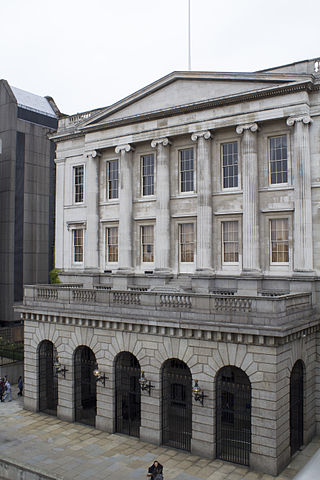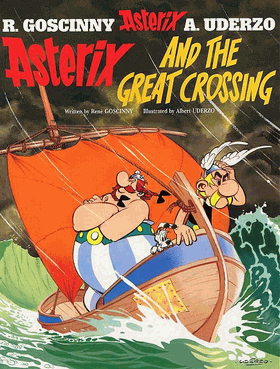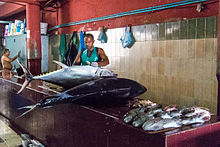
The Tragedy of Hamlet, Prince of Denmark, often shortened to Hamlet, is a tragedy written by William Shakespeare sometime between 1599 and 1601. It is Shakespeare's longest play, with 29,551 words. Set in Denmark, the play depicts Prince Hamlet and his attempts to exact revenge against his uncle, Claudius, who has murdered Hamlet's father in order to seize his throne and marry Hamlet's mother. Hamlet is considered among the "most powerful and influential tragedies in the English language", with a story capable of "seemingly endless retelling and adaptation by others". It is widely considered one of the greatest plays of all time. Three different early versions of the play are extant: the First Quarto ; the Second Quarto ; and the First Folio. Each version includes lines and passages missing from the others.

"Molly Malone" is a song set in Dublin, Ireland, which has become its unofficial anthem.
George Silver was a gentleman of England during the late 16th and early 17th centuries, who is known for his writings on swordplay. He is thought to have been the eldest of four brothers, and eleventh in descent from Sir Bartholomew Silver, who was knighted by Edward II. He married a woman named Mary Haydon in London, in 1580. Silver's activities after the publication of his book are unclear. The fencing historian Aylward claims that he was alive in 1622, when he was visited by Cooke, Clarenceux King-of-Arms. However, Robert Cooke died in 1593. The Clarenceux King-of Arms in 1622 was William Camden, but as he became paralyzed in 1622 and died in 1623 it is doubtful whether he visited Silver either.

In the First Folio, the plays of William Shakespeare were grouped into three categories: comedies, histories, and tragedies. The histories—along with those of contemporary Renaissance playwrights—help define the genre of history plays. The Shakespearean histories are biographies of English kings of the previous four centuries and include the standalones King John, Edward III and Henry VIII as well as a continuous sequence of eight plays. These last are considered to have been composed in two cycles. The so-called first tetralogy, apparently written in the early 1590s, covers the Wars of the Roses saga and includes Henry VI, Parts I, II & III and Richard III. The second tetralogy, finished in 1599 and including Richard II, Henry IV, Parts I & II and Henry V, is frequently called the Henriad after its protagonist Prince Hal, the future Henry V.

A livery company is a type of guild or professional association that originated in medieval times in London, England. Livery companies comprise London's ancient and modern trade associations and guilds, almost all of which are styled the "Worshipful Company of" their respective craft, trade or profession. There are 111 livery companies in total. They play a significant part in the life of the City, not least by providing charitable-giving and networking opportunities. Liverymen retain voting rights for the senior civic offices, such as the Lord Mayor, Sheriffs and Common Council of the City Corporation, London's ancient municipal authority with extensive local government powers.

The Worshipful Company of Fishmongers is one of the 111 Livery Companies of the City of London, being an incorporated guild of sellers of fish and seafood in the City. The Company ranks fourth in the order of precedence of City Livery Companies, thereby making it one of the Great Twelve City Livery Companies.
The Lord Chamberlain's Men was a company of actors, or a "playing company", for which William Shakespeare wrote during most of his career. Richard Burbage played most of the lead roles, including Hamlet, Othello, King Lear, and Macbeth. Formed at the end of a period of flux in the theatrical world of London, it had become, by 1603, one of the two leading companies of the city and was subsequently patronized by James I.
A puukko is a small traditional Finnish general purpose belt knife with a single curved cutting edge, solid hidden tang, and usually, a flat spine. Military models of puukko were popular in the Russian criminal underworld under the name "Finnish knife" or finka since the 20th century. The modified version were among the models on which the Soviet military knife NR-40 was based and which was informally called "finka".

A kitchen knife is any knife that is intended to be used in food preparation. While much of this work can be accomplished with a few general-purpose knives – notably a large chef's knife, a tough cleaver, a small paring knife and some sort of serrated blade – there are also many specialized knives that are designed for specific tasks. Kitchen knives can be made from several different materials.

Elizabethan literature refers to bodies of work produced during the reign of Queen Elizabeth I (1558–1603), and is one of the most splendid ages of English literature. In addition to drama and the theatre, it saw a flowering of poetry, with new forms like the sonnet, the Spenserian stanza, and dramatic blank verse, as well as prose, including historical chronicles, pamphlets, and the first English novels. Major writers include William Shakespeare, Edmund Spenser, Christopher Marlowe, Richard Hooker, Ben Jonson, Philip Sidney and Thomas Kyd.

Asterix and the Great Crossing is the twenty-second volume of the Asterix comic book series, by René Goscinny (stories) and Albert Uderzo (illustrations).

Shakespeare's plays are a canon of approximately 39 dramatic works written by English poet, playwright, and actor William Shakespeare. The exact number of plays as well as their classifications as tragedy, history, comedy, or otherwise is a matter of scholarly debate. Shakespeare's plays are widely regarded as among the greatest in the English language and are continually performed around the world. The plays have been translated into every major living language.

Sonnet 138 is one of the most famous of William Shakespeare's sonnets. Making use of frequent puns, it shows an understanding of the nature of truth and flattery in romantic relationships. The poem has also been argued to be biographical: many scholars have suggested Shakespeare used the poem to discuss his frustrating relationship with the Dark Lady, a frequent subject of many of the sonnets. The poem emphasizes the effects of age and the associated deterioration of beauty, and its effect on a sexual or romantic relationship.

A fish market is a marketplace for selling fish and fish products. It can be dedicated to wholesale trade between fishermen and fish merchants, or to the sale of seafood to individual consumers, or to both. Retail fish markets, a type of wet market, often sell street food as well.

St Nicholas Cole Abbey is a church in the City of London located on what is now Queen Victoria Street. Recorded from the twelfth century, the church was destroyed in the Great Fire of London in 1666 and rebuilt by the office of Sir Christopher Wren. The church suffered substantial bomb damage from German bombs during the London Blitz in the Second World War and was reconstructed by Arthur Bailey in 1961–2.
Valentine Simmes was an Elizabethan era and Jacobean era printer; he did business in London, "on Adling Hill near Bainard's Castle at the sign of the White Swan." Simmes has a reputation as one of the better printers of his generation, and was responsible for several quartos of Shakespeare's plays. [See: Early texts of Shakespeare's works.]

William Shakespeare's Hamlet is a tragedy, believed to have been written between 1599 and 1601. It tells the story of Hamlet, Prince of Denmark—who takes revenge on the current king for killing the previous king and for marrying his father's widow —and it charts the course of his real or feigned madness. Hamlet is the longest play—and Hamlet is the largest part—in the entire Shakespeare canon. Critics say that Hamlet "offers the greatest exhibition of Shakespeare's powers".

A fishwife, fish-fag or fishlass is a woman who sells fish. She is typically the wife of a fisherman, selling her husband's catch, but other sources of fish have been used.

Sir Nicholas Exton was a medieval English merchant. A leading member of the Fishmongers' Company and citizen of the City of London, he was twice elected Mayor of that city during the troubled years of the reign of King Richard II. Little is known of his personal background and youth, but he became known at some point as a vigorous defender of the rights of his Guild. This eventually landed him in some trouble for attacking the then-current Mayor, and he was fined and imprisoned as a result. The situation soon reverted to his favour with the election as Mayor of Nicholas Brembre, a close ally of his. During this period Brembre was a loyal supporter of the King, who at this time was engaged in a bitter conflict with some of his nobles. They managed to manoeuvre the King into surrendering some of his authority, and this, in turn, weakened Brembre, who was eventually executed by the Appellants for his support of the King.
























